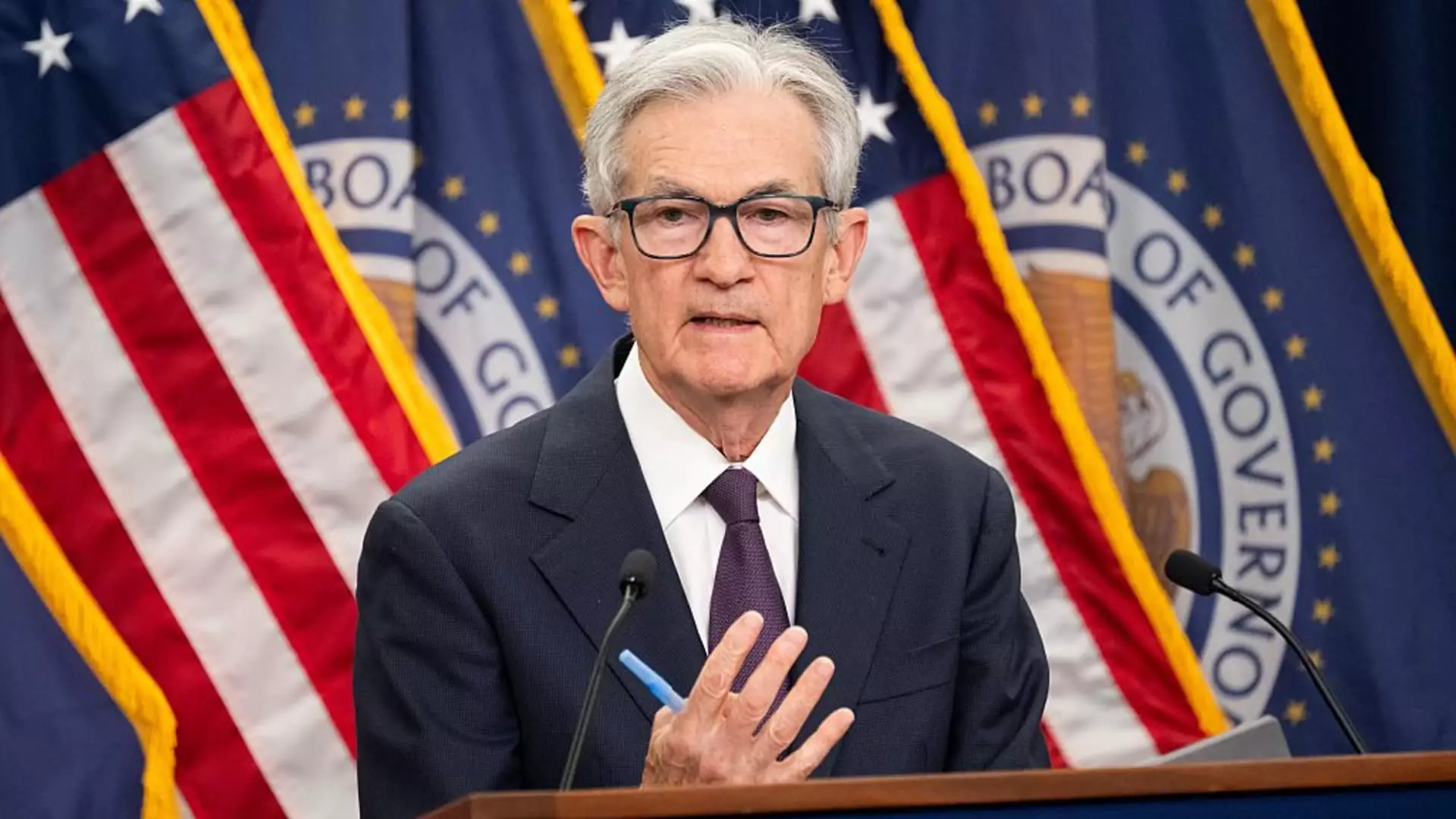As Federal Reserve Chair Jerome Powell steps into the congressional spotlight this week, his message is crystal clear: the Fed is not budging on interest rates yet. The unrelenting debate surrounding tariffs has positioned inflation as a contentious topic, one that Powell intelligently sidesteps, opting for a cautious approach. With inflation figures inching above the coveted 2% target, the broader implications of President Trump’s tariffs loom large, casting a shadow over the economic landscape. Powell’s nuanced stance reveals a central bank grappling with the dual objectives of fostering full employment while simultaneously combating rising prices, a situation rife with unpredictability and political tension.
The Federal Reserve’s keen awareness of its dual obligations reflects a broader economic philosophy, one that advocates for sustainable growth without sacrificing price stability. However, Powell’s assurances may not provide the comfort they intend, particularly to the ever-vocal critics of the Fed. We live in a politically charged atmosphere where economic decisions fall victim to partisan critiques, as evidenced by President Trump’s relentless attacks on Powell, whom he derides as “dumb” and “hard-headed.” This cloud of hostility complicates Powell’s role, as external pressures could subvert sound economic policymaking.
The Tug-of-War Over Economic Signals
Powell’s latest remarks also highlight the inherent contradictions within economic indicators. While he labels the economy as “solid” and suggests that labor markets are nearing full employment, the persistent inflation above 2% beckons concern. This situation inevitably brings tariffs into the discourse. Historically, tariff implementations may only exert temporary upward pressure on prices, but the uncertainty of their long-term impact fosters a cautious approach from the Fed. Powell’s acknowledgment of the evolving nature of policy and its broader impact appears prudent; however, it simultaneously raises the question of how long the Fed can afford to remain passive in the face of looming economic questions.
This ‘wait-and-see’ strategy may indeed rattle markets worried about future hikes or cuts. The recent Fed Open Market Committee (FOMC) meeting only furthers this tension, reflecting a split among members on future rate cuts. Such divergence indicates underlying friction within the central bank regarding how to best navigate current economic conditions, each member pulling in a slightly different direction. And let’s not forget the intricate dance between inflation expectations and reality; price stability is an illusion easily shattered by mismanagement or errant external shocks.
The Price Stability Paradox
As Powell aims to maintain price stability, he faces an uphill battle. Higher tariffs can create a short-term spike in prices, yet the broader goal of maintaining low inflation requires a long-term vision. “The FOMC’s obligation is to keep longer-term inflation expectations well anchored,” Powell stated, underscoring the pivotal role that perception plays in economic dynamics. Consumers and investors thrive on stability, and any visible agitation can lead to detrimental economic behaviors, spiraling into self-fulfilling prophecies of inflation.
The duality of Powell’s analysis—that changing economic conditions require a flexible approach—could both stabilize and unsettle markets. In a climate where the economy is touted as strong by some but riddled with vulnerabilities from tariffs and ongoing international trade tensions, Powell’s cautiousness might prove wise—or could be seen as an inability to act decisively.
Furthermore, examining the nuances of inflation statistics reveals a complex narrative. The Fed employs core inflation rates, which exclude volatile food and energy prices, as a measure of underlying economic health. Yet, in a consumer-centric economy, these exclusions can mislead perceptions of inflation’s true nature, sparking debates over the validity of these metrics. For the average American, who feels inflation in everyday life, statistics appear disconnected from lived experiences.
The Political Dimensions of Economic Policy
The intertwining of politics and economics cannot be overstated, particularly as economic decisions become entangled in partisan politics. Powell’s measured tone might soothe markets, but such caution also paints him as indecisive—a label that President Trump readily exploits to frame the Fed’s perceived failures. This political dimension raises questions about the autonomy of the Federal Reserve and its ability to operate free from external pressures that might compromise its objectives of stability and growth.
With economic conditions that teeter on the brink of manageable and chaotic, the Fed’s decisions will continue to echo throughout the global economic landscape. Adaptability, not rigidity, may ultimately dictate the Fed’s success—or its fallibility. As we teeter on the threshold of aggressive tariff implementations and fluctuating inflation rates, the bond of trust between policymakers and the public will be tested.

